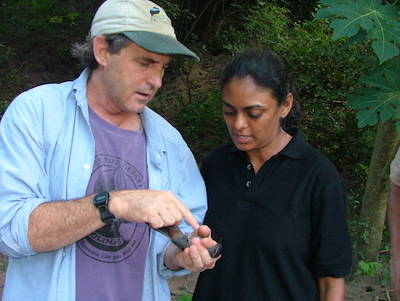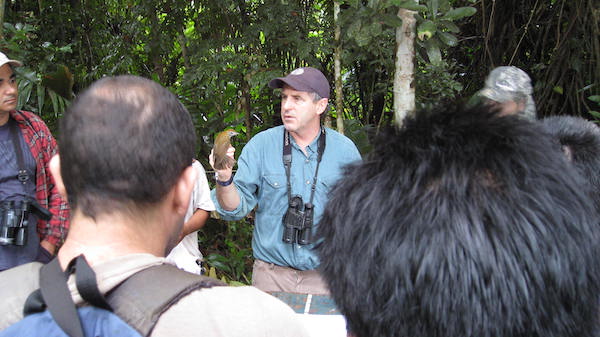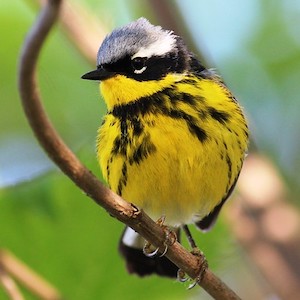We are proud to announce that Peter Pyle, a biologist at IBP since 1995, was recently awarded an Individual Investigations Award by Partners in Flight! Partners in Flight (PIF) is a 30-year-old network of more than 150 organizations (including IBP) across the western hemisphere that work to conserve birds throughout their full life cycle. The Investigations Award is given annually to “an individual or group that conducts outstanding research and/or contributes scientific data and interpretations that improve our understanding of avian ecology, habitat management, or other scientific factors important to the PIF initiative."

An Indigo Bunting wing is held open to determine the age of its feathers.
Peter’s innovative and painstaking work on molt and developing criteria for ageing birds has led to significant advances in our understanding of avian population dynamics and conservation needs. For instance, being able to age birds on the wintering grounds allows estimation of first year survival, a demographic bottleneck in many bird populations. And being able to distinguish birds in their first breeding season from birds in their subsequent breeding seasons allows estimation of recruitment and habitat selection of new individuals into a breeding population, leading to a better understanding of population health.
We talked with Peter a bit about how he came to study molt.
How did you first become interested in birds?
My father was a birder and bird bander and got me going on my first Christmas Bird Count at age 6 months and had me banding birds by age 4. During that count, near Seattle, rumor has it my mom forgot I was on her lap and jumped out of the car when she saw a Snowy Owl on a barn, dumping me head first into the snow. My first banding experience was trying to remove a Northern Cardinal from a trap and it bit my finger and escaped. I guess I had a built-in passion for birds, as neither of these events deterred me.
How did you first get interested in investigating molt?
As a teenager I ran a banding station and the thing that seemed least understood at the time was ageing birds, other than those with obvious plumage differences. This led me to investigate how molt patterns related to ageing birds, and it went on from there. I always liked puzzles and brain teasers, and doing them was definitely good practice for trying to figure out bird molts!
For the uninitiated, molt seems like a very niche topic of study, but it has obviously become very important and broadly applicable to the study and conservation of birds. When you started investigating molt, did you know that it would be so important?
At first I just wanted to better determine the ages of birds, but the more I studied molt the more I realized not only how important it was, but how ignored the subject was in the ornithological literature as compared with breeding dynamics, wintering habitats, migration strategies, and so on. Yet the energy demands of molt are just as important to birds as those for breeding and migration. Analyzing MAPS banding data, we recently have found that birds go to special areas or habitats to molt, and conserving these areas may be equally important to their conservation as conserving breeding and wintering habitats. Gaining a better knowledge of habitat requirements for molt is a current research focus.

Peter working with a trainee at a workshop in Veracruz, Mexico in 2006
Another of Peter’s major contributions to bird conservation cited in his award from Partners in Flight is his work training bird banders in Latin America in the 1990s and 2000s as part of the MoSI program. These workshops educated and inspired many up-and-coming bird biologists and conservationists working in critical overwintering areas for Neotropical migratory birds, and many of these trainees went on to leadership roles in bird conservation in Latin America.
Congratulations to Peter on this well-deserved award!






